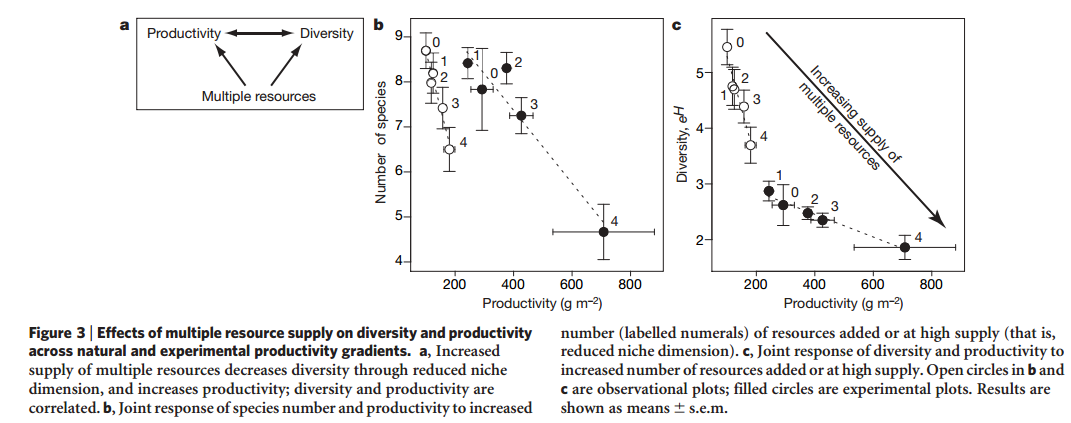Harpole, W. Stanley, and David Tilman. “Grassland species loss resulting from reduced niche dimension.” Nature 446.7137 (2007): 791-793.
This study aimed to test a hypothesis derived from niche theory called the ‘niche dimension hypothesis’. This hypothesis posits that the addition of co-limiting resources should reduce species diversity while also increasing productivity. To test this, the authors used data on a previous enrichment study, combined with a similar experiment to get at the role of co-limiting nutrients on plant community dynamics in a grassland community. They varied the number of limiting resources they added (nitrogen, phosphorous, calcium, and water) in all possible pairs, finding that no one resource was strongly limiting, but many resources were co-limiting. They found the number of resources added was negatively and non-linearly related to the number of species in the community, but positively related to above-ground biomass. This suggests that a small subset of species are able to dominate in high resource environments, and is some of the motivating work behind the biodiversity-productivity navel-gazing fest that is currently taking place among ecosystem ecologists (see these papers).
I read this paper because I thought it was going to specifically discuss plant niches and dimensionality reduction. They use dimensionality to discuss the combined effects of the limiting nutrients on species diversity. They further argue for the possibility that competition isn’t the only factor in reducing species diversity, but that plants sensitive to nutrient additions could be exposed to abiotic conditions outside of their niche boundaries. They also discuss the effect of increased leaf litter, which is not a direct competitive interaction (like competition for light).

